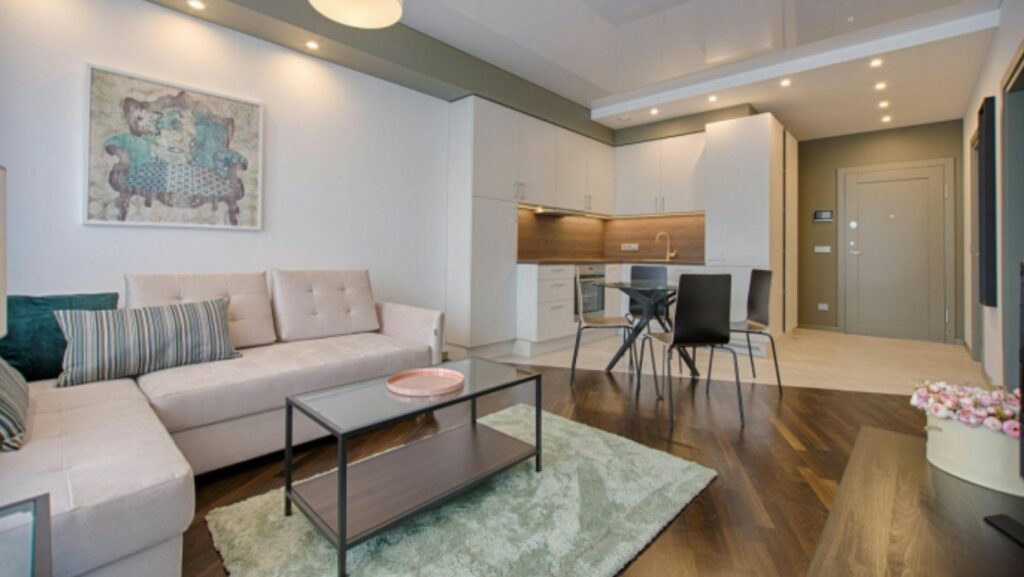Art has the power to transform—turning the ordinary into the extraordinary. With bold artistic statements, you will not only have a visually stimulating ambiance but also reflections of your personality and tastes. To this effect, bold art pieces become focal points and instant conversation starters that set the tone of a room. Here’s how you can effectively use bold artistic statements to transform your spaces.
Understanding the Power of Bold Art
Inherently powerful in bold art is the way it extends a hand to demand attention and evoke emotion. Using vibrant colors, dynamic composition arrangements, and impressively large scale, bold art stirs an interior space and changes it. It has this presence that more subdued pieces don’t have, so it can define the character of a room. Bold art energizes space with personality and drama. It is an art that provokes viewers to interact with it in some way, stimulating thought and conversation. Its impact stretches a long way beyond mere decoration; it inspires, challenges, and uplifts.
Adding bold art in a home is everything in terms of creating a precise focus that anchors the room, setting the kind of mood in the space. Leveraging this transformative power, bold art becomes an indispensable factor for every person who wants to make a lasting statement within one’s choice of interior design.
Selecting the Right Pieces
Choosing bold pieces of art calls for a considerate approach. Make sure that you consider the general theme and color scheme of the space. The bold art should not contrast with your decoration but rather complement it. Works that use colors already displayed in your room are those to find if you want to make a beautiful yet jaw-dropping effect. Abstract paintings, large photographs, and intricate sculptures are some great options for making bold artistic statements.
Placement and Positioning
Where you put your art is vital—almost as much as the art itself. Good placement makes sure every piece is fully appreciated and adds to the general ambiance in the room. The following are some considerations you can think of to maximize the impact of your art to be positioned:
Focal Points: Large, bold pieces must be hung where they become the focal point of the room. Ideally, it would be over the fireplace, behind the sofa, or on a wall hanging for a space within the entryway. These are areas the eyes are drawn to, and by putting them here, your artwork will anchor the design that the room holds.

Centered: Artwork should be hung so that the center of the piece is around 57 to 60 inches from the floor. This makes it easily viewable and lends a comfortable pose to viewing if hanging in areas where people are usually seated, like dining and living rooms, perhaps hang a little lower so that the eye level is seated.
Grouping: In arranging several pieces, consider the overall composition of the grouping. Grouping of like sizes makes it look consistent and whole, and thereby, mixing the sizes creates interest. Make sure the grouping is balanced, and there is space around all the pieces; do not allow pieces to be so close that there are too many in each little area—this gives the “cluttered” look.
Negative space: Allow your artwork to breathe by framing it or placing it on the background of negative space. Such space highlights the artwork and keeps the room in calm air. Do not put bold stuff near each other as each bold piece requires its own space.
Lighting: Appropriate lighting is very important. Use spotlights or track lights to bring key pieces into the limelight well. Natural light may also add to these aesthetics, but one needs to be careful with sunlight, which will cause fading over time.
If you consider the above elements seriously, you can place your abstract art in such a way that it would not only decorate but highlight and integrate into your space, creating a visually interesting and harmonious composition.
Creating Contrast
One of the most dramatic and effective ways to show off bold art would be through juxtaposition. If one has a neutrally colored room, then a vividly colored art piece would provide the “shot in the arm” of color needed, and its presence can be centered on; vice versa for a very colorful room where one might want a monochromatic or black-and-white piece to stand out. Contrasts need not stop at color; they may also refer to texture and form. One can mix some smooth and sleek with rough texture to create depth and interest in the space. Mixing more than one piece is allowed.
Incorporating Multiple Pieces
While one bold piece can make a statement, including more than one piece can bring excitement to the space. For example, a gallery wall could be a very effective way of showcasing a collection of bold art. When there is more than one piece, balance will come from the size, shape, color, and other elements that will make up a visually correct display. This placement should appear deliberate, thoughtful, and perhaps even curated in an arrangement that will move the eye through the room.
The Role of Lighting
This will be further enhanced by proper lighting on such bold art pieces. Allow lamps or even track lighting to highlight major pieces and really bring out good lighting of the colors and details of a piece. Natural light does much to set things off as well. Place your art in a position where it will catch sunlight, but be wary of potentially light-sensitive art that fades over time. Dimmable lights will help you achieve the transition in atmosphere and emphasis that you want so you can adjust your art perception at different times of the day.
Personalizing Your Space
The boldest art can bring out as much of your personality as possible in your home. Go for those pieces that mean a great deal to you individually, like something that felt special in your life, an artist whose work simply attracts you, or even a composition that speaks an exact feeling one might have inside. Your art will speak to your tastes and experiences. It ensures that your space is not flatly personal.
Striking a Balance between Boldness and Muteness
While bold art is the star of the show in your space, let it be balanced with subtlety so as not to be overwhelmed.

Pair your statement pieces, other neutral furniture, low-key accessories, and soft textiles. This will create the feeling of a sophisticated, paired-down look where your bold art will play center field without creating a rivalry.
Evolving Your Collection
Your collection will bridge the passage of time as your tastes change and grow. Don’t be afraid to switch around pieces or add to that body of work—maybe even reframing some to give them an entirely new look. In that way, your space doesn’t remain static but always represents your alive and growing person. Art isn’t static; it’s a living, breathing part of your home that is able to morph and change along with you.
Final Thoughts
The decoration of a space is not about decoration; rather, it makes bold artistic statements and creates an environment that projects your unique personality and aesthetic taste. Careful selection, positioning, and lighting of bold art pieces can turn any space into a vibrant and inspiring oasis. So remember to modulate boldness with subtlety and personalize your choice, and over time, let your collection evolve on its own. These are some of the ways in which you can transform space with your art, making it beautiful but, more especially, meaningful.

